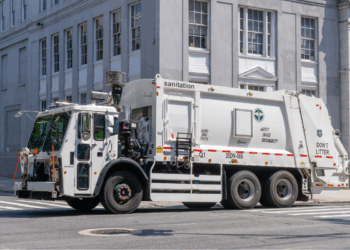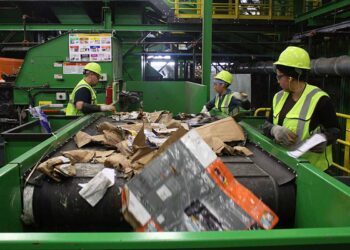The amount of material Oregonians disposed of in 2022 dropped significantly from the year before, mainly due to fewer building-destroying wildfires, and electronics made up only 0.4% of the recycled materials.
According to the latest state Material Recovery and Waste Generation Rates report, about 6.1 million tons of material was generated in 2022, down 6.2% year over year, with 3.7 million tons going to landfills and incinerators and 2.4 million tons recovered.
The material recovery rate includes materials that were recycled, composted and burned for energy. In 2022, 64% of the material recovered was recycled, 25% was composted and 11% was burned.
Broken out by percentage and weight, around 28.5% of the material recovered in 2022 was metals, 25.2% was yard debris, 19.1% was cardboard, 10.3% was wood, 7% was other papers, 4.2% was glass, 3% was food waste, 2% was plastic, 1.9% was “other,” and 0.4% was electronics.
In 2022 electronics recovery decreased by 10% year over year. Electronics recovery by weight peaked in 2012 at about 52 million pounds, according to the report’s data, but has always been a smaller overall percentage of the material stream. In 2022, about 17.3 million pounds were recovered, compared to 19.2 million pounds the year prior.
The state reported 5,600 fewer tons of lead acid batteries recycled in 2022, coming in at nearly 15,000 tons. Scrap metal recovery increased by about 64,000 tons, or 12%, to 613,000 tons.


























